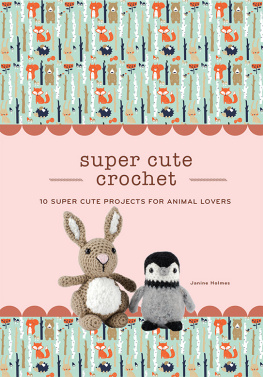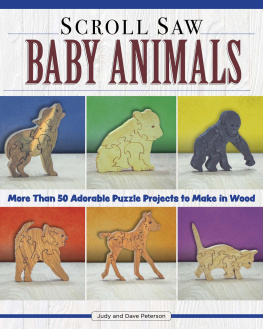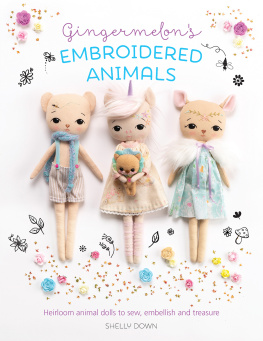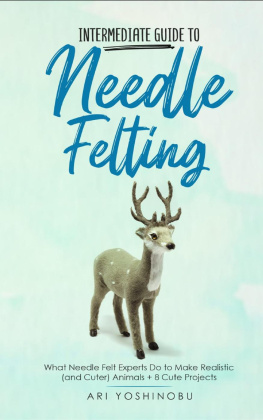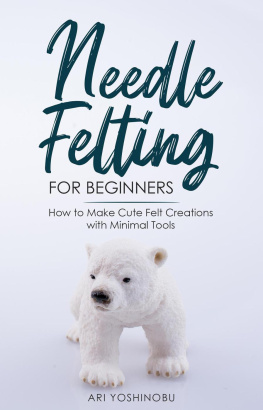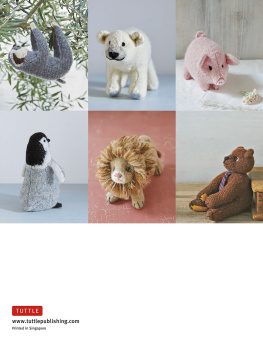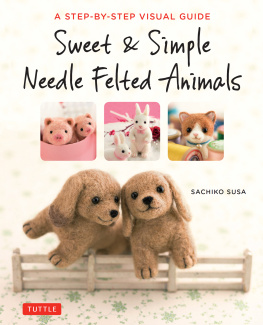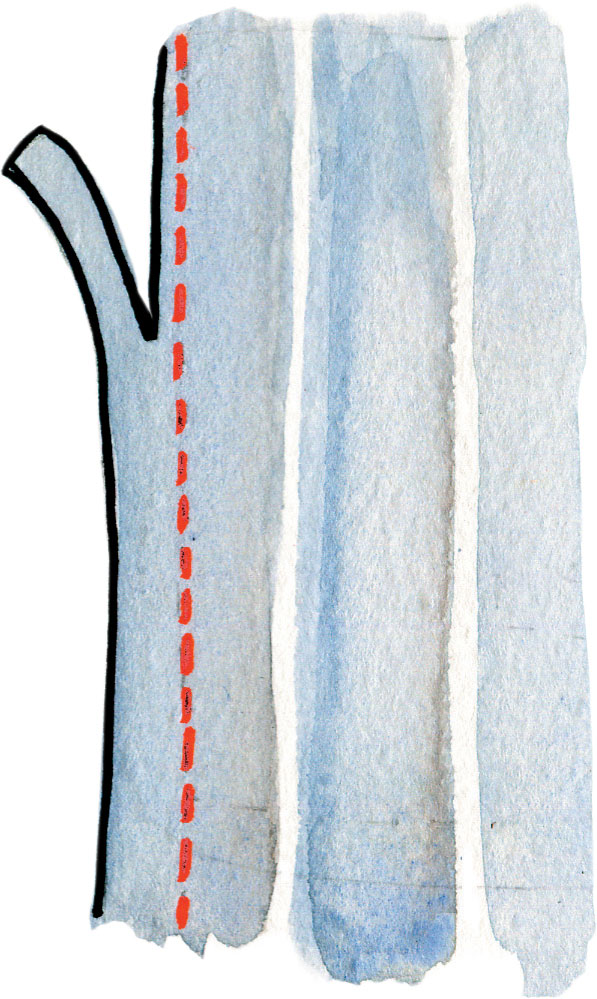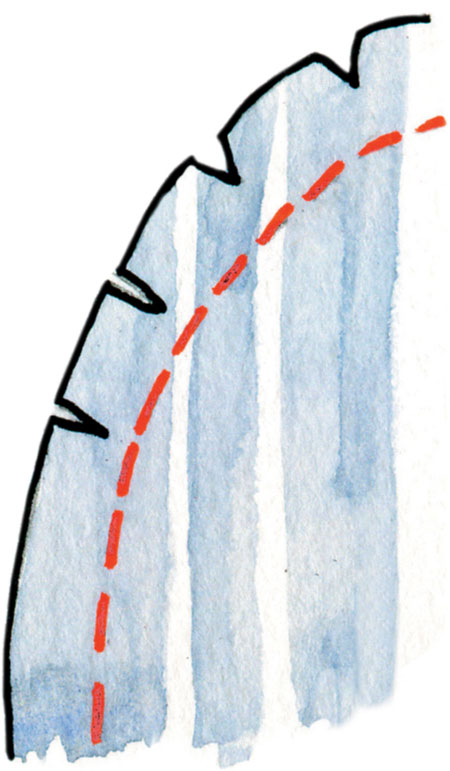INTRODUCTION

From knitting and crochet to stuffed-animal making, I have learned every craft technique I know from books. As a visual person, the combination of written instruction, photos, and illustrations has always been easier for me to follow than verbal instructions from a teacher. Craft books allow you to flip back and forth through the pages and work at your own pace. You may make more mistakes, but there is no better way to learn a new skill or technique.

I started making stuffed animals in preparation for a craft fair during my last semester in college. After three and a half years of screen printing, machine knitting, and gouache painting as a textile design student, I was ready to try something fun and different. It was easy to translate the playful, childlike quality of my textile designs into three-dimensional stuffed creatures. Naturally, my dachshund pup, Ollie, inspired the first stuffed-animal pattern I created.
Soon after, I expanded into different dog breeds and animals and opened an online shop. I tapped into a very supportive and inspiring online community of crafters and artists. Once I got faster at pattern making, I began offering stuffed-pet portraits. I realized stuffed animals have a sweet, nostalgic nature that adults seem to love as much as children.
If youve completed the most basic of sewing projects, Im confident youll be able to master the eighteen projects within this book. Be sure to read , Things to Know Before You Make Your Animals, before you start. There are a few simple but important techniques that youll need to keep in mind for every project. Machine sewing the small pieces requires focus and patience at first, but it will go rather quickly once you get the hang of it. I think youll find these projects to be forgiving with small mistakes. Any visible hand stitching serves as a charming reminder that the piece is handmade.
Please see the materials lists at the beginning of each project as suggestions, not strict requirements. My favorite fabrics to work with are those that have been passed down or found secondhand, because they lend a texture and an interest to the finished creature not often achievable with new fabrics. Try to use materials you have on hand and let your own collection inspire your choices.

MATERIALS
Fabric
All projects in this book can be completed with about 1/4 yard (22.9 cm) of fabric. Fat quarters commonly found at fabric and quilting shops will work perfectly. Although medium-weight woven cotton tends to work best, its great to experiment with different types of fabric.
Because only a small amount of fabric is needed to make a stuffed animal, its easy to use old clothes or household linens from your home or a local thrift store. Try experimenting with different materials, such as terry cloth towels, felted wool sweaters, old jeans, or corduroys. Lightweight or sheer fabrics can be layered with heavier-weight cotton for added stability. Repurposing materials is the most cost-effective and eco-friendly option, and it often lends more texture and interest to your work.
Threads
Its good to have a collection of all-purpose thread in a variety of colors. However, most stitching will be hidden, so dont sweat it if your thread does not exactly match your fabric. I suggest buying embroidery floss in pink and black for embroidering the animal eyes, noses, and mouths.
Stuffing
I prefer to stuff all of my animals with carded wool. After experimenting with different types of stuffing, I found that I like wools loft and density the best. Other options include natural cotton, polyester, and bamboo fiberfill.
TECHNIQUES
Pattern Preparation
For all projects, photocopy the patterns at 200% and cut out. (All of the animals in the book are made using patterns at 200%.) On some patterns, arrows indicate the top of the pattern piece as it is referred to in the instructions. Dashed lines indicate fold lines. Pin the patterns to the fabric and cut on the solid lines, making small outward notches at the markings. When cutting two fabric layers at once, be sure to place your fabric with right sides together so you have a corresponding right and left side for each piece.
SEWING
All projects require edge stitching, which means there is very little seam allowance built into the patterns. Try to keep your stitches about 1/4" (6 mm) from the fabric cut edge.
When sewing pieces together, place the fabric with the right sides facing unless specified otherwise. Using a short stitch length on your sewing machine makes it easier to control the fabric when sewing around small curves, and helps make the seams stronger. To avoid puckers at the corners of your finished animal, stitch the seams, and then clip the corners close to (but not through) the stitching (A). Trim extra fabric along the seam allowance to help eliminate any distortion (B). Along curved seams, make small perpendicular cuts up to (but not through) your stitching (C).
(A) Clipping corners
(B) Trimming seam allowance
(C) Clipping curves

An easy way to stitch two small identical shapes (such as ears and tail pieces) together involves tracing around the pattern onto the fabric wrong side, but not cutting out. Place two fabric pieces together with the right sides facing, stitch along the traced line, and trim outside the stitching. This method also makes it easier to control the small pieces when using a sewing machine.

STUFFING
Tear off small bits of fiberfill and stuff the smallest areas of the animal first, such as the feet, nose, head, and tail. I like to use the rounded end of a crochet hook to gently push the stuffing into the corners. For the four-legged fellows, the most important portion to stuff well is the area where the legs meet the body. This will help the animal stand more upright. Sometimes the legs will splay slightly from the body after the animal has been stuffed. This happens if the animal has not been densely stuffed or if you are working with a lightweight fabric. To fix this, pin each leg perpendicular to the body, and make several small stitches to tack the legs closer to the body (A). If you use polyester stuffing, you will need to take this extra step with every four-legged animal you make.


